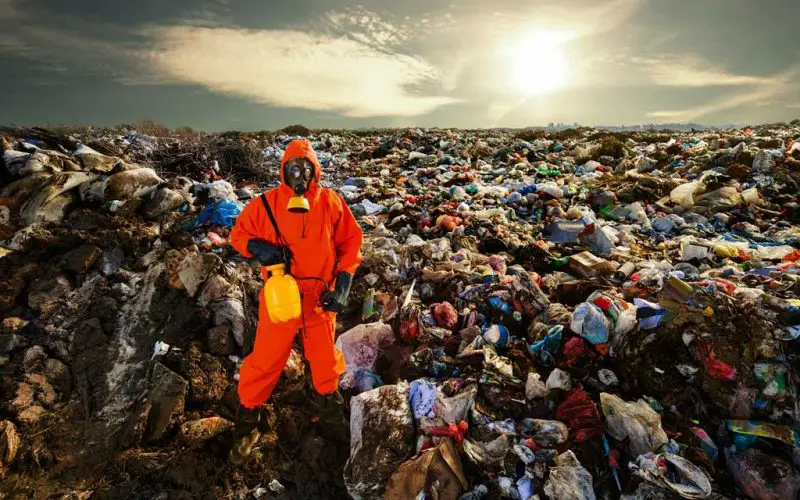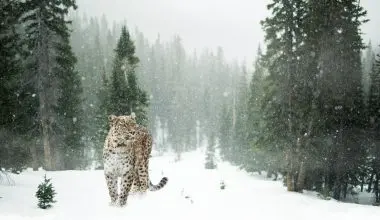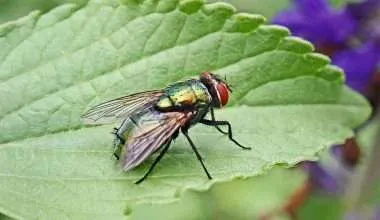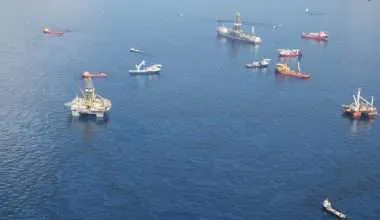Table of Contents Show
No one can predict how our future will look like, however with the increasing population of the planet there is one thing certain that pollution will become more and more catastrophic over time. There are various types of pollution such as Air, Water, Noise and Land pollution. Of all the various types of pollution it is Land pollution which is the most dangerous of them all and also heavily contributes to water pollution by draining into water tables or run off erosion into open waters.
What is Land Pollution?
It is the pollution and destruction of the earth’s surface, mainly contributed by the activities carried out by humans on the planet. The phenomena of land pollution have been occurring ever since the industrial revolution and have led to the annihilation of many ecosystems and habitats.
Land pollution may occur directly or indirectly. In direct land pollution people may intentionally or unintentionally deposit waste or toxic chemicals directly onto a particular site. Whereas in Indirect Land Pollution the toxic chemicals may leach to a particular area where it was not deposited initially and may cause damage to it.
Causes of Land Pollution:
As stated above, Land pollution is a very serious issue for our society and one we should take actions to prevent. Here we’ll state the various causes of land pollution which are:
1. Deforestation
The removal of trees to make way for urbanization has affected the environment significantly. Each second, an area of trees equivalent to a football field is chopped down by loggers in the Amazon forest. This removal of trees and plant life has led to the decrease in wildlife in that area and also the decrease in habitat for those animal species. This is one of the reasons why species get endangered.
The removal of plants has led to the change in landscape of that area from once scattered greenery to barren patches of land with no beauty whatsoever. Forests are accustomed to getting rain throughout the year. Unfortunately as the process of deforestation kicks in, the heavy rain cannot be controlled and quarantined by the forests, which leads to the washing away of fertile soil and nutrients required to regenerate growth. Even removal of a portion of the trees in any rainforest can significantly damage the environment and some species may be unable to adapt to this change and may die out.
2. Agriculture
The need and demand for more agriculture is directly proportional to the increase in the population of the world. To satisfy the demands of the population for an increasing food supply, the world’s forests and grasslands are being converted to farmlands to produce crops and feed the population.
The crops planted for agriculture do not have deep roots to prevent soil erosion such as the previous natural vegetation which had deep roots. This of course, has led to soil erosion and flooding as the land has no ability to absorb excess rainfall.
Farmers constantly use pesticides, fertilizers, herbicides and insecticides on the crops. These toxins may be absorbed by the soil and may damage the healthy organisms responsible for making new vegetative growth. These chemicals may also runoff and alter the chemical composition of the streams and rivers nearby the agricultural land.
The constant overgrazing of land by herbivorous animals contributes to the alteration of the natural microorganisms of the soil and prompts the growth of bacteria which can be harmful to the soil and increase the chances of corrosion.
3. Urbanization
With the need for a better lifestyle in the face of the increasing population, urbanization has had a negative impact on the pollution. Habitats have been destroyed to build roads and buildings for the rising populations. Species have had to migrate and search for new homes and living conditions similar to the one they were living in previously. Increased waste has led to more landfills in the environment in order to remove them from the city.
4. Industry
The need for various products has led to massive industrialization in countries around the world. Factories produce massive amount of waste and toxic emission which can pollute the environment substantially. Although many developed countries have made regulations regarding emissions and waste dumping, they are still not enough to prevent the pollution and damage to the biosphere.
The industries must try and reduce the pollutants they produce and must find alternative ways to produce products which have a lesser impact on the environment. We should also be promoting and buying products which are made from sustainable practices. More developing countries must also enforce strict regulations on the industry to reduce the land pollution they are currently contributing to.
5. Mining
Most of the world’s mines are strip mines, in which the earth’s core is blasted or scraped to extract the required resource. Mining can weaken the foundation of the earth which supports the land on the surface and may eventually lead to its eventual collapse. Strip miners have also contributed to widespread soil erosion.
Underground mining brings waste and toxic substances found in rocks onto the surface of the earth where they may pollute the environment and cause harm to human life. Coal fires underground may burn for years spontaneously and can produce harmful gases and reach the surface of the earth through fissures and vents.
6. Landfills and waste
For the safe disposal of solid waste, the government gives out contracts to various agencies which are tasked with making landfills to safeguard the leaching of waste and toxins into the soil. However, these landfills may become compromised due to various reasons and this waste may then contribute to Land pollution.
Landfilled liners made of plastic may deteriorate over time and liquid toxins and waste may leak through them. The fact that they are made of plastic, shows that they are not a potent barrier to protect the waste and toxins from eventually leaching out of the landfills. The liquid leached out from these landfills are highly toxic and are resistant to wastewater treatment . The liquid which is leached out is known as Leachate.
Landfill regulations require that actions must be taken to remove leachate from landfills throughout the years of operation of the landfill and its eventual closure. Sadly however, still most of the leachate after strict regulations and laws may end up leaching into the soil and polluting it.
Effect of Land Pollution on the Environment:
Land pollution has led to the eradication of habitats and ecosystems and has reduced the aesthetics of the planet. Our planet has spectacular landscapes to behold; unfortunately, these landscapes are going barren as land pollution has surged over the course of decades. The sight of seeing destroyed barren lands is depressing and shows how much we care about our land.
The number of species and their biodiversity has been hampered in this process as well. The complete ecosystem gets destroyed eventually once a single species gets affected by Land pollution. Contaminated soil may no longer be fertile to produce plants and crops. It may also be a toxic wasteland for anyone residing near it. As the soil is no longer fertile, no plants can be produced to form oxygen through photosynthesis thereby reducing the supply for oxygen in that ecosystem along with the increasing demand for food in that ecosystem by the herbivores.
Toxic chemicals may leach into the soil and eventually into the water sources of the community affecting anyone who drinks that water. Toxic chemicals may be absorbed through the skin or by ingestion also. All this may lead to deaths of the species leading to an alteration in the food chain and food web of that particular ecosystem.






